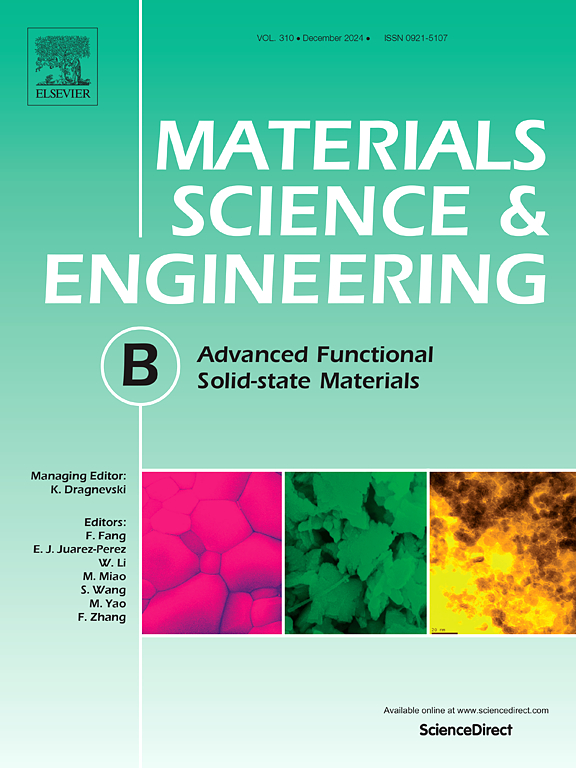Improved photocatalytic and antibacterial properties by hydrothermally fabricate CuWO4/PANI-Ppy nanocomposites
IF 3.9
3区 材料科学
Q2 MATERIALS SCIENCE, MULTIDISCIPLINARY
引用次数: 0
Abstract
One of the remaining obstacles to the sustainable approach is the development of outstanding economical, eco-friendly, and efficient materials for wastewater treatment. In this instance, we created a synthetic binary nano composite based on poly(aniline-co-pyrrole) (PANI-PPy) and copper tungstate (CuWO4) for the purposes of antibacterial treatment and dye degradation. In the current work, composite formation was carried out to introduce different polymers onto the copper tungstate surface which was fabricated using conventional hydrothermal synthesis. The structure, morphology, and size of the pure copper tungstate and polymer composited with CuWO4 were further examined by XRD, FTIR, FE-SEM, and HR-TEM. XRD results confirmed with JCPDS Card No 01-088-0269. FE-SEM and HR-TEM results revels that the synthesized CuWO4 and polymer composite were in flower shape. The purpose of this binary-nanocomposites was to break down organic dyes like rhodamine B (RhB). Many aspects of the photocatalysis progression, including the rate of the reaction, the percentage of degradation, the scavenger test, and the effect of photodegradation on both pure and composite materials, were examined. Under visible light at room temperature, the pure copper tungstate and composite were able to eliminate 97 % and 96 % of the RhB dye solution in 80 and 40 min respectively. The antibacterial properties of bimetallic oxides on bacteria were studied. With Mueller-Hinton broth, Escherichia coli and Staphylococcus aureus are used in this work to test the antibacterial activity of copper tungstate and its polymer composite. Maximum Zone of inhibition was found against Ecoli (15 mm) and S. aureus (20 mm) at the concentration of 100 µg/ml. Cytotoxicity of the nanocomposites towards Normal Human Dermal Fibroblasts (NHDF) to assess its potential biocompatibility.
求助全文
约1分钟内获得全文
求助全文
来源期刊

Materials Science and Engineering: B
工程技术-材料科学:综合
CiteScore
5.60
自引率
2.80%
发文量
481
审稿时长
3.5 months
期刊介绍:
The journal provides an international medium for the publication of theoretical and experimental studies and reviews related to the electronic, electrochemical, ionic, magnetic, optical, and biosensing properties of solid state materials in bulk, thin film and particulate forms. Papers dealing with synthesis, processing, characterization, structure, physical properties and computational aspects of nano-crystalline, crystalline, amorphous and glassy forms of ceramics, semiconductors, layered insertion compounds, low-dimensional compounds and systems, fast-ion conductors, polymers and dielectrics are viewed as suitable for publication. Articles focused on nano-structured aspects of these advanced solid-state materials will also be considered suitable.
 求助内容:
求助内容: 应助结果提醒方式:
应助结果提醒方式:


